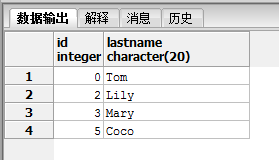The full outer join combines the of both left join and right join. If the rows in the joined table do not match, the full outer join sets NULL values for every column of the table that lacks a matching row. There are three types of outer joins : LEFT, RIGHT, and FULL.
It then looks to see if there are any rows from tthat are not in the result set. If so, it adds in those rows placing NULLs for all the fields of t2. Then, for each row in table Tthat does not satisfy the join condition with any row in table T a joined row is added with null values in columns of T2.
Full Outer Join : When tables are connected with each other such that it should take all records from left table as well as right table and only matching record from both the tables then this join is called as Full Outer Join. This join is less used join in applications. Full outer join is one of the less used join in day to day a pplications.
That same query could be written with inner join. So, which table is the subject of the join ? FROM tableAS tableLEFT outer JOIN tableAS tableON table1. All about writing join conditions in SQL. Also, see notes about joining tables caveats on the link you provided.
However, this is not always true. Restrictions in the join clause are processed during joins , while where clause restrictions are processed after joins. These noise words are not mandatory.
After my previous posting I received mails asking about what was meant by using “generate_series” in an outer join. In this example we assume that we want to aggregate data in an hourly basis. En la entrada de hoy hablaremos de uno de los comandos más importantes en SQL , aplicado específicamente a nuestro motor de Base de Datos. Trataremos los diferentes tipos de JOIN uno a uno y mediante ejemplos sencillos y prácticos. SQL ist nicht ganz einfach zu verstehen, speziell wenn es darum geht mehrere Tabellen mit joins zusammenzufassen bzw zu verknüpfen.
Im Folgenden wird dem SQL Einsteiger sehr einfach mit Venn Diagrammen sowie einfachen SQL queries erklärt wie die verschiedenen SQL joins funktionieren. I am wondering if there has been any discussion or thought about including outer joins in later releases of PostreSQL. It seems highly inefficient simulating outer joins with subqueries and UNION ALL statements. INNER JOIN ist der Inhalt dieses Kapitels. You can specify outer joins using the following syntax:.
In SQL , the left join returns all the records from first table and matched records from second table. If there is no match from second table then only records from. Cela permet de lister tous les résultats de la table de gauche (left = gauche) même s’il n’y a pas de correspondance dans la deuxième tables. OUTER JOIN wird im nächsten Kapitel.
I am relatively new to the list and somewhat new to PostgreSQL. My SQL knowledge is advanced to the point of being able to use a WHERE clause. The basic idea is that a table-valued function (or inline subquery) gets applied for every row you join.
This makes it possible to, for example, only join the first matching entry in another table. Having a mental block with (self) outer joins. When I wrote about cross joining for SQL server, a lot of people asked me for a live example. Lateral joins arrived without a lot of fanfare, but they enable some powerful new queries that were previously only tractable with procedural code. In this post, I’ll walk through a conversion funnel analysis that wouldn’t be possible in PostgreSQL 9. According to the official documentation: The LATERAL key word can precede a sub-SELECT FROM item.
Left Outer Join in PostgreSQL example program code : Left Outer Join query offers more benefits for the Left table, can also be understood as the First table and thus. While both syntaxes can be used for inner joins , only the ansi join syntax supports outer joins in Postgres. Because column restrictions like col = are not related to joins , you would think that restrictions have the same effect whether they appear in the where clause or as part of a join clause, e. Select For Update and Left Outer Join.

Chave Resultado: Cross Join. L’utilisation de cette commande permet de combiner les résultats des tables, les associer entre eux grâce à une condition et remplir avec des valeurs NULL si la condition n’est pas respectée.
Keine Kommentare:
Kommentar veröffentlichen
Hinweis: Nur ein Mitglied dieses Blogs kann Kommentare posten.